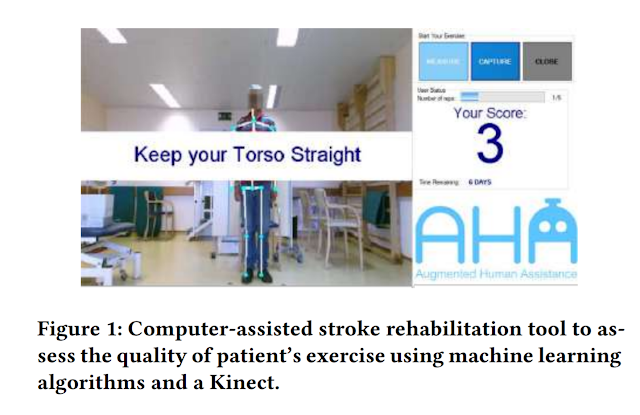Learning to Assess the Quality of Stroke Rehabilitation Exercises
Due to the limited number of therapists, task-oriented exercises are
often prescribed for post-stroke survivors as in-home rehabilitation.
During in-home rehabilitation, a patient may become unmotivated
or confused to comply prescriptions without the feedback of a therapist. To address this challenge, this paper proposes an automated
method that can achieve not only qualitative, but also quantitative assessment of stroke rehabilitation exercises. Specifically, we
explored a threshold model that utilizes the outputs of binary classifiers to quantify the correctness of a movements into a performance
score. We collected movements of 11 healthy subjects and 15 poststroke survivors using a Kinect sensor and ground truth scores from
primary and secondary therapists. The proposed method achieves
the following agreement with the primary therapist: 0.8436, 0.8264,
and 0.7976 F1-scores on three task-oriented exercises. Experimental
results show that our approach performs equally well or better
than multi-class classification, regression, or the evaluation of the
secondary therapist. Furthermore, we found a strong correlation
(R
2 = 0.95) between the sum of computed exercise scores and the
Fugl-Meyer Assessment scores, clinically validated motor impairment index of post-stroke survivors. Our results demonstrate a
feasibility of automatically assessing stroke rehabilitation exercises
with the decent agreement levels and clinical relevance.



Comments